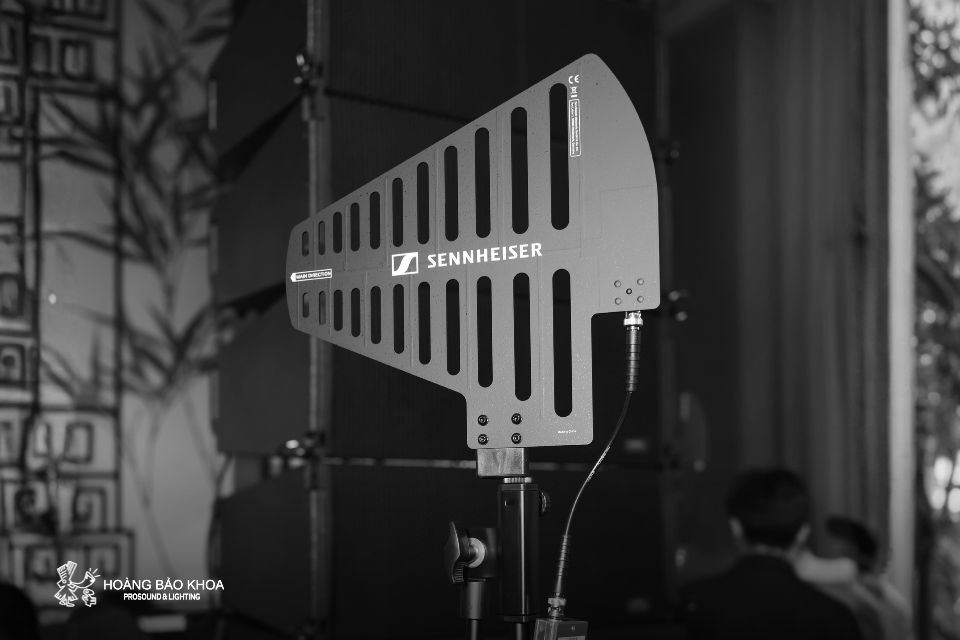This article explains in detail the concept of antenna diversity in wireless microphone systems, including how to correctly position antennas and the recommended spacing according to Sennheiser’s guidelines. Proper antenna placement and diversity setup help ensure stable signal and minimize during reception operation.
Antenna diversity
Antenna diversity (also called antenna reception diversity) is a technique used to increase RF signal reliability and reduce signal dropouts caused by interference, reflections, or obstacles. When a system uses two antennas to receive the same signal, the receiver continuously selects the antenna with the better signal quality at any given moment, ensuring more stable transmission.
Common causes of signal dropouts in a wireless Microphone system include:
- Multipath interference: Reflected signals from metal surfaces or walls causing phase cancellation.
- Dead spots: Areas of weak signal caused by obstacles or RF interaction.
- Performer movement: Changes in position that alter the signal path and received signal strength.
How it works
- The system uses two antennas positioned apart or directed differently.
- The receiver continuously monitors both signal paths and selects the antenna with the stronger signal at each moment.
Benefits of antenna diversity
- Reduced risk of signal dropouts.
- More reliable performance in complex RF environments.

Antenna spacing
The spacing between antennas plays an important role in the effectiveness of a diversity system. Proper placement allows the receiver to obtain signals that differ in phase and amplitude, improving RF stability.
For omni-directional antennas
- Minimum: at least ¼ wavelength (λ).
- Ideal: around ½ to 1 wavelength.
- Example: For UHF (500 - 800 MHz) operation, spacing of approximately 25–50 cm between two omni antennas is recommended.
Reason: Omni antennas receive from all directions and are thus more susceptible to reflections and multipath. While smaller spacing can work, diversity still improves signal stability.
For directional antennas
- Minimum: at least 1 wavelength.
- Ideal: around 1.5 to 2.5 wavelengths.
- Example: A spacing of approximately 75 - 150 cm between two directional antennas is appropriate.
Reason: Directional antennas focus reception in specific directions, so greater separation helps each antenna receive signals with differing phase characteristics, improving diversity performance and reducing dropout risk.
Placement considerations
- Ensure line of sight between the antennas and the transmitter where possible.
- Avoid placing antennas too close to metal walls, steel columns, or other RF sources.
- Mount antennas higher than the performers’ heads to reduce obstruction and signal loss.
- When combining directional antennas with a diversity system, optimize both distance and orientation so each antenna receives distinct signal characteristics.
Conclusion
Correct antenna selection, spacing, and placement are key to a stable wireless microphone system. Omni antennas can function with smaller separation but still benefit from diversity, while directional antennas typically require larger spacing to achieve maximum performance. When designing a system, consider antenna type, the RF environment, and mounting positions to minimize dropouts and optimize signal quality.